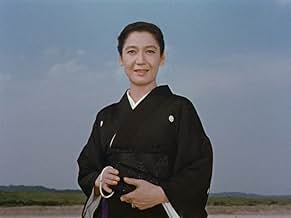Aggiungi una trama nella tua linguaThe family of an older man who runs a small sake brewery become concerned with his finances and his health after they discover him visiting an old mistress from his youth.The family of an older man who runs a small sake brewery become concerned with his finances and his health after they discover him visiting an old mistress from his youth.The family of an older man who runs a small sake brewery become concerned with his finances and his health after they discover him visiting an old mistress from his youth.
- Premi
- 1 vittoria e 1 candidatura in totale
Recensioni in evidenza
The main crux of the story rests on the patriarch of the family, Manbei, who continues to see a woman he knew while he was married, a notion which naturally upsets at least one of his daughters. The other two seem more pensive about the situation, leading them to contemplate their own lives as the eldest is widowed herself and debating whether or not to remarry while the youngest is wondering who she should marry. It is worth noting how Ozu portrays the elder generation as being more open to passion and vigorous living than the younger. The conclusion seems to be that despite the inevitability of death, how one lives one's life determines how they will be remembered rather than who they were perceived to be. Though death remains ever-important, it cannot and should not prevent one from attempting to live to the fullest possible existence.
There is no Ozu film nearest Sirk's or Minneli's universe like this one.
Late Spring, Tokyo Story, Early Spring, and Tokyo Twilight
Lo sapevi?
- QuizThe last of six collaborations between Yasujiro Ozu and Setsuko Hara.
- Citazioni
Kitagawa Yanosuke: We humans can't come to terms with death until it's too late. Even people like my brother, who did as he pleased. On his deathbed, even Toyotomi Hideyoshi said: "It's as if my glorious life was but a dream within a dream."
- ConnessioniReferenced in Ikite wa mita keredo - Ozu Yasujirô den (1983)
- Colonne sonoreIn a Persian Market
Composed by Albert Ketèlbey
I più visti
- How long is The End of Summer?Powered by Alexa


































